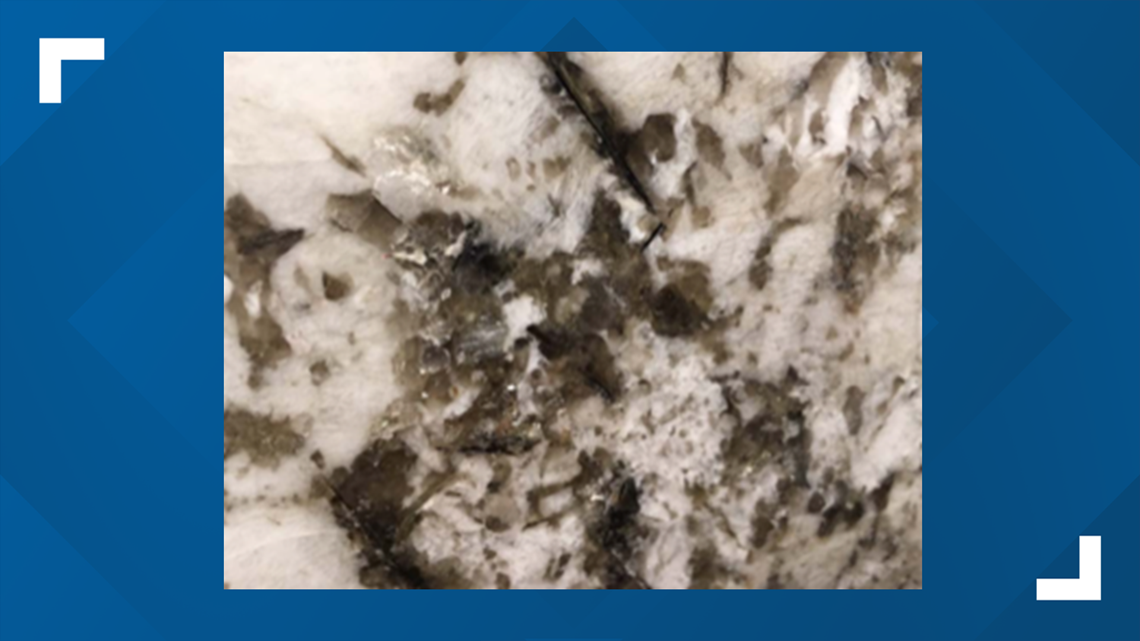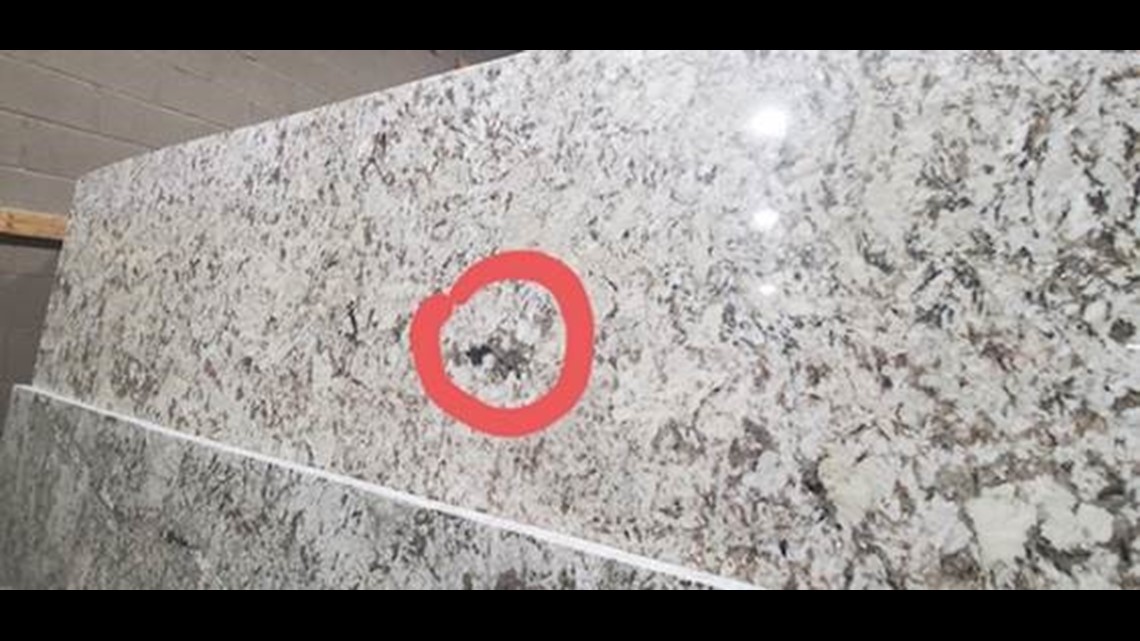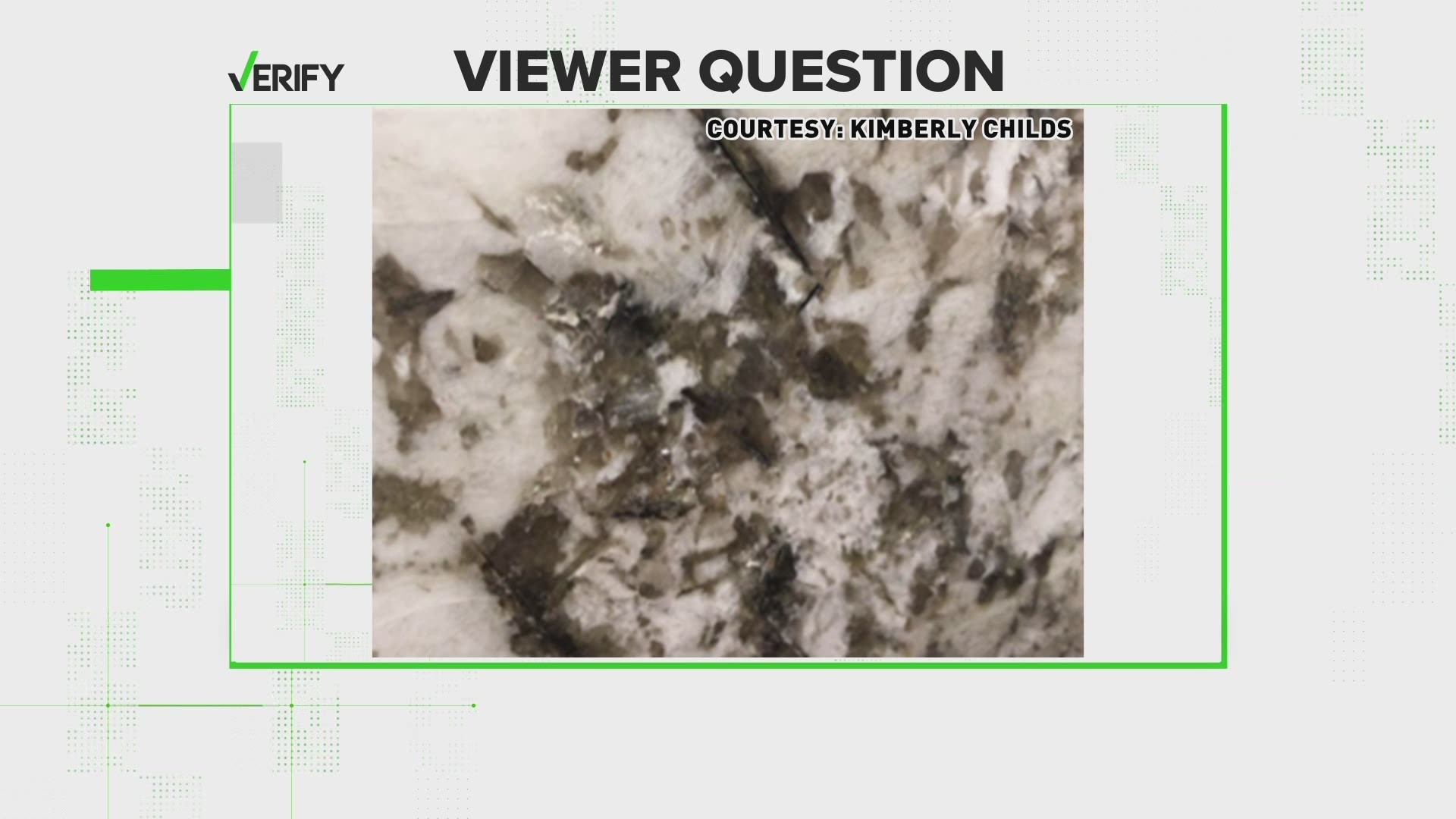GREENSBORO, N.C. — Your home is your sanctuary -- the place you live life, raise children and make memories.
It's where you should feel happy and healthy. So, of course, you want the materials inside your house to look good and be safe.
VERIFY QUESTION
Viewer Kimberly Childs reached out to our 2 Wants To Know 'Call For Action' team with pictures of her countertops.




She explained she and her husband purchased a granite slab in 2020 and soon noticed black, ink-like splotches in several areas. She said the company rep told her the spots meant the granite was 'diseased,' but a technician assessed it and determined the granite was not diseased. Kimberly wanted answers, no less, so let's VERIFY.
Can granite be 'diseased?' If not, what else can cause imperfections in the material? And, are there any health hazards associated with it?
VERIFY SOURCES
- U.S. Geological Survey
- Tom Garcia - general contractor and owner of Southern Evergreen custom homes
VERIFY PROCESS
First, let's talk about granite. The U.S. Geological Survey affirms it is an igneous rock, meaning solidified from lava or magma. It comes from the Latin word 'granum,' meaning grain, because of the grains of quarts and feldspar that define it.
Garcia said there is no such thing as diseased granite, but there are imperfections in the rock, itself, that can appear as blemishes on the surface.
"When we pull granite out of the ground, this is what it looks like (textured and dull). It's not particularly pretty. But, then you shine it up, and there you go -- you have this beautiful (smooth, shiny) granite," Garcia explained as he showed an example of raw versus finished granite.
He said large slabs can contain a lot of dark spots, even though granite is mostly a lighter color.
"That can happen naturally, and it often does," he said.
Or, it can happen accidentally -- through human error. Because, remember, granite is a rock.
"It's still porous. We look at it on the unfinished side -- it's really porous. That's why it's important granite gets sealed. It's really simple -- spray it on, wipe it on, let it dry. If not, red wine or something can get in there, and it can stain," he said.
VERIFY CONCLUSION
The claim about 'diseased granite' is false. Rather, there are imperfections in the rock -- either occurring naturally or by human error -- that can cause dark splotches.
However, if you think about the word 'diseased' in the literal sense, granite can pose some health concerns for people. That is why, during the cutting and installation process, wear a mask to avoid inhaling dust. Garcia also noted all rock has radiation, so he suggested doing a simple home radon test after installing granite.
Do you have a VERIFY inquiry? Submit a post, screen or selfie video of the claim in question (along with any supplementary pictures) to Meghann Mollerus via:
E-mail: VERIFY@wfmy.com
Facebook: Meghann Mollerus News

